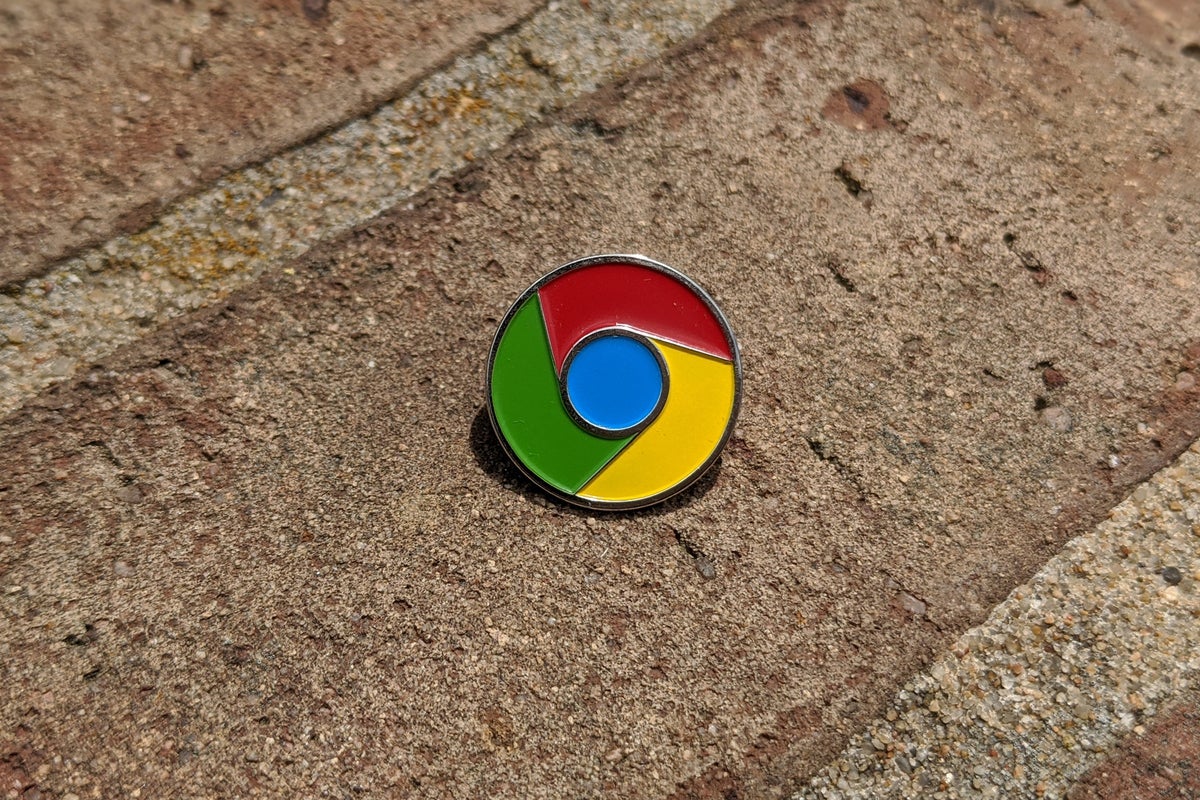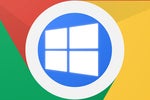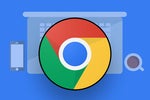Ah, Chrome OS. How far you've come.
I found myself contemplating the state of Google's Chromebook platform this week as I read over a new interview detailing some of the specifics of the upcoming Chrome OS Windows app support system — and something amusing occurred to me:
When you think about Chrome OS in a bigger-picture, evolutionary view, the software's current state is almost hilariously ironic — not necessarily in a bad way, mind you, but in a way that's both funny and also quite revealing of how Google's vision for computing has progressed over the years.
Let me explain: Back when it first showed up in 2011, Chrome OS was as limited and barebones as an operating system could be. In that earliest incarnation, it was quite literally just a "browser in a box" — a full-screen Chrome window with no desktop, nothing so much as even resembling a traditional app, and next to no settings or options. That "browser in a box" characterization stuck around as a misleading jab at Chromebooks for far too long, but in the very beginning, it really was accurate.
And you'd better believe it was that way by design, too. In its official Chrome OS introduction, Google described the platform as being "a natural extension of Google Chrome" — a "lightweight operating system" designed specifically for "people who live on the web."
I mean, this Chromebook introduction video pretty much says it all. It portrays a Chromebook as actually being the web, "in a computer-like object" — specifically noting that it involved no programs, nothing to start up, and no desktop ("not even a desktop background"!).
Sure brings you back, doesn't it? Chrome OS truly was designed to be the anti-operating-system — one where none of the usual computing paradigms applied.
And now? Well, my goodness, where do we even begin? Chrome OS has a desktop, for one — one with a taskbar, a quick settings area, and yes, even a desktop background. It has plenty of stuff to start up. And as for the programs? It probably goes without saying, but those represent the most dramatic transformation of all.
In a night-and-day flip from the stubborn "no programs" stance at its launch in 2011, Chrome OS is now on the brink of supporting an almost dizzying array of application types: It has regular ol' web apps, of course, in addition to the newer and more complete-feeling progressive web apps that are slowly but surely taking on a critical role in the platform. Then it has Android apps and Linux apps, too, in addition to the upcoming Windows app support for enterprises.
So Chrome OS, Android, Linux, and now Windows — that's essentially four different operating systems within a single streamlined interface. Chrome OS has gone from being the "nothing" OS to being the "everything" OS, thanks to its platform-defying, all-in-one setup. Suffice it to say, that's quite the shift.
One could even argue that the current "everything" approach is in direct conflict with the original Chrome OS vision — an argument that's certainly not without merit. After all, the entire point of Chrome OS was initially to be the anti-operating-system, right? The not-quite-a-computer environment where you didn't even need programs to do what you wanted to do?
On some level, there's no denying that — hence the title of this column and the crux of my entire realization that Chrome OS has become inherently ironic. At the same time, though, as someone who actually uses a Chromebook in my day-to-day life, I'd say that while the specifics of the implementation have changed considerably, the spirit at the foundation of the platform has remained mostly the same.
By that, I mean the ultimate underlying point of a Chromebook was never really that it didn't run traditional programs or that it didn't have a desktop. Those were memorable marketing lines and a good way to get the concept across, but the real point was that by eschewing those concepts early on, Google was able to create a computing environment that was simple, speedy, and secure — with little to no ongoing maintenance and none of the headaches that accompany more traditional operating system setups.
And you know what? At their core, Chromebooks still mostly deliver on that vision. Ask people who own 'em what they like about 'em, and you'll hear the same answers over and over again: They're easy to use. They're less complicated. They do everything you need without all the extra bloat. And they're less of a hassle than a Windows, Mac, or full-fledged Linux computer.
That part of the Chromebook proposition hasn't changed much, even if the specifics around it have. Chromebooks still free you from device drivers, hardware compatibility complexities, software update annoyances, and traditional virus worries. They're still essentially zero-maintenance systems, and if you really needed to, you could reset a Chromebook completely and be back up and running as if nothing had happened in a matter of minutes. That's what makes them appealing, both to individual users and to organizations — enterprises, small businesses, and schools alike.
The main exception is, fittingly, with those apps. As we've discussed before, the fact that Chromebooks can run so many different kinds of programs these days is absolutely an asset. It provides a level of versatility you won't find on any other kind of computer. But it's also a drawback — because, plain and simple, figuring out what kind of app you need for any given purpose on a Chromebook has become a convoluted mess.
As it stands now, you could frequently seek out and find a regular web app, a progressive web app, an Android app, and a Linux app for the same basic purpose — and no normal human is ever gonna know which app type is right for which situation (if they even realize all those options are available and know where to look for 'em, which itself is pretty doubtful). And for plenty of purposes, there is a right answer as to which format makes the most sense.
Google has a long way to go in sorting out that mess — and while efforts to do so are still extraordinarily limited, there's reason to believe some manner of plan is in place. By and large, though, each new app type added into the equation has filled in some gaps, expanded the possibilities of what a Chromebook can accomplish, and made Chrome OS as a platform more broadly viable for an ever-expanding pool of potential Chromebook owners. And let's not forget, too, that the Android app integration and Android OS alignment have allowed Chromebooks to take on a secondary purpose as the next-gen "Android tablets" — a pretty powerful perk to have built into your laptop.
Chromebooks essentially had to evolve if they were gonna survive and turn into the complete-feeling products that they are today. And for the software to go from the "nothing OS" to the "everything OS" while still maintaining much of its original underlying purpose is no small feat — ironic as it may be.
Now let's see if Google can tap back into that original simplicity and find a way to mold this messy app mishmosh into something that once again feels cohesive, manageable, and maybe, just maybe, even simple. After all this progress, it's time to look back to Chrome OS's roots to rediscover that intangible quality that made these devices stand out in the first place — and to bring that back to the forefront of the experience, even with all of the new elements at play.
Sign up for my weekly newsletter to get more practical tips, personal recommendations, and plain-English perspective on the news that matters.

[Android Intelligence videos at Computerworld]


























































